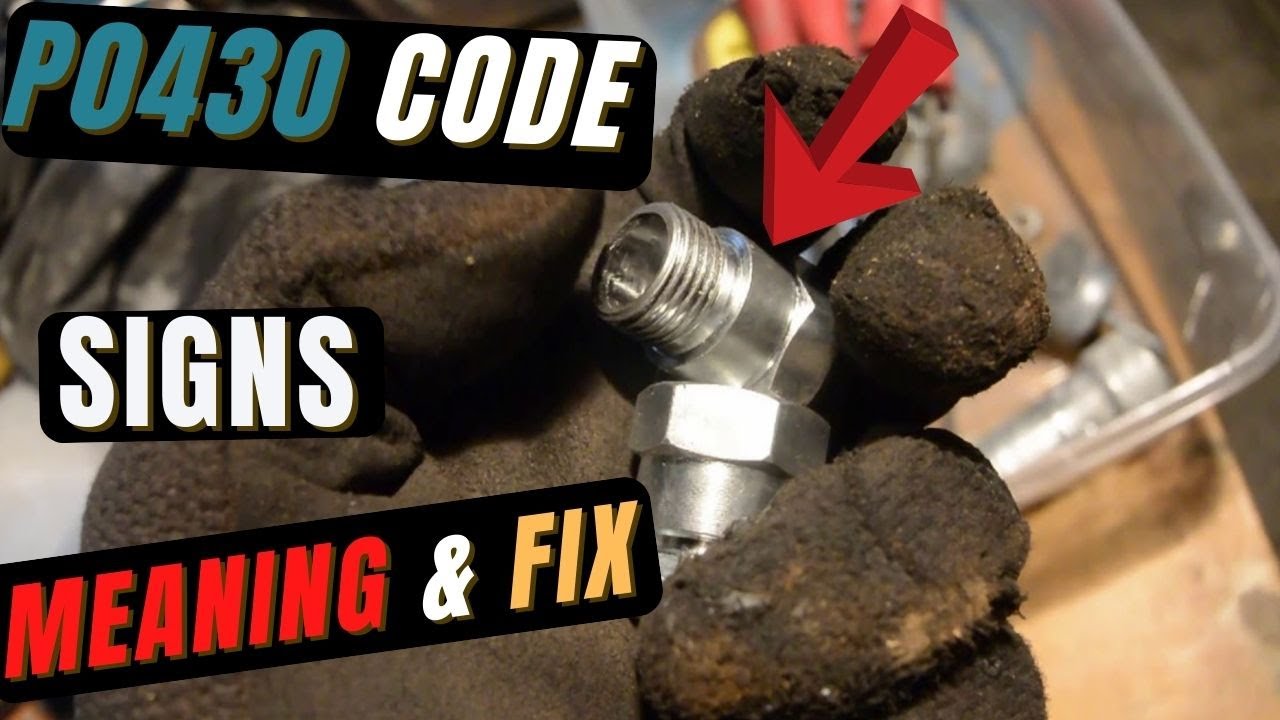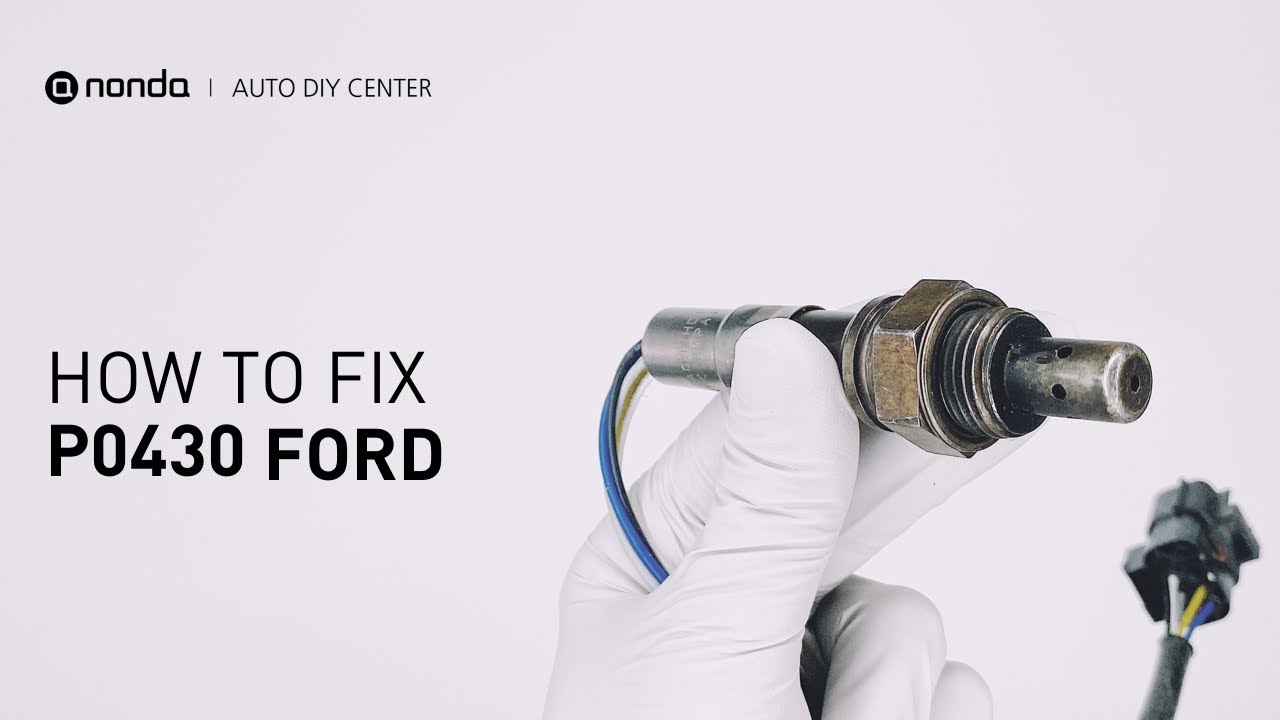Fixing P0430 Code: Catalyst System Efficiency Below Threshold

P0430 code is a common diagnostic trouble code that indicates an issue with the catalyst system efficiency in a vehicle. It is important to address this issue promptly as it can have significant impacts on the vehicle's performance and emissions. This article serves as a comprehensive guide to understanding the P0430 code, its causes, symptoms, diagnosis, and solutions.
Understanding the P0430 Code
The P0430 code is defined as "Catalyst System Efficiency Below Threshold (Bank 2). The catalyst system plays a crucial role in reducing harmful emissions from the vehicle's exhaust gases. It consists of the catalytic converter, oxygen sensors, and other components. When the efficiency of the catalyst system falls below the predetermined threshold, the P0430 code is triggered. This code specifically relates to Bank 2, which refers to the set of cylinders that are not on the same side as Cylinder 1.
The catalyst system efficiency below threshold is a serious issue as it can lead to increased emissions, reduced fuel efficiency, and potential damage to the engine and other components. Ignoring this code can result in further complications and more expensive repairs in the long run.
This article aims to provide a detailed understanding of the P0430 code and offer solutions to fix the issue effectively.
Causes of the P0430 Code
Faulty Oxygen Sensors
Oxygen sensors play a crucial role in monitoring the oxygen levels in the exhaust gases. If the oxygen sensors are faulty or not functioning properly, they can provide inaccurate readings to the engine control module (ECM). This can lead to the triggering of the P0430 code. It is important to regularly maintain and replace oxygen sensors as needed. Signs of faulty oxygen sensors include poor fuel economy, rough idle, and increased emissions.
Regular sensor maintenance and replacement is crucial to prevent the occurrence of the P0430 code.
Catalytic Converter Problems
The catalytic converter can experience various issues that can lead to the P0430 code. These include physical damage, internal clogging, and contamination from oil or coolant. Catalyst converter failure can be caused by factors such as engine misfires, fuel system problems, and exhaust leaks. Symptoms of a failing catalytic converter include reduced power, increased emissions, and rattling noises from the exhaust system.
Causes of catalytic converter failure must be identified and addressed promptly to avoid triggering the P0430 code and further damage to the vehicle.
Engine Misfires and Ignition System Issues
Engine misfires can affect the efficiency of the catalyst system, leading to the P0430 code. Misfires can be caused by factors such as faulty spark plugs, ignition coils, or fuel injectors. Ignition system issues can disrupt the combustion process and result in unburned fuel reaching the catalyst system.
Diagnosing and resolving engine misfires and ignition system issues is essential in preventing the occurrence of the P0430 code.
Exhaust Leaks
Exhaust leaks can contribute to the triggering of the P0430 code by allowing uncontrolled air to enter the exhaust system. Common sources of exhaust leaks include damaged or rusted pipes, gaskets, and mufflers. These leaks can disrupt the correct operation of the catalyst system, leading to reduced efficiency.
Detecting and fixing exhaust leaks is crucial in ensuring the proper functioning of the catalyst system and preventing the occurrence of the P0430 code.
Fuel System Problems
The fuel system plays a crucial role in providing the correct air-fuel ratio for combustion. Issues such as clogged fuel injectors, failing fuel pump, or fuel pressure problems can lead to an imbalance in the combustion process. This, in turn, can affect the catalyst system's efficiency and trigger the P0430 code.
Troubleshooting and resolving fuel system problems is important in maintaining the catalyst system's efficiency and preventing the occurrence of the P0430 code.
Symptoms of the P0430 Code
The P0430 code can manifest through various symptoms that indicate an issue with the catalyst system efficiency. It is important to be aware of these symptoms to promptly diagnose and fix the problem. Common symptoms associated with the P0430 code include:
- Check Engine Light (CEL) illumination
- Reduced engine performance
- Decreased fuel efficiency
- Increased emissions
- Engine misfires
- Rough idle
Each of these symptoms can have a negative impact on the overall performance and longevity of the vehicle.

Diagnosing the P0430 Code
Diagnosing the P0430 code requires a systematic approach and the use of diagnostic tools. Here is a step-by-step guide to diagnosing the P0430 code:
- Retrieve the P0430 code using an OBD-II scanner
- Inspect the exhaust system for any visible damage or leaks
- Check for any engine misfires using a scan tool
- Inspect the ignition system components, such as spark plugs and ignition coils
- Test the oxygen sensors for proper functioning
- Perform a fuel pressure test to ensure proper fuel delivery
Interpreting scanner data and conducting the necessary tests will help pinpoint the specific cause of the P0430 code.
Solving the P0430 Code
Repairing Faulty Oxygen Sensors
If the oxygen sensors are identified as the cause of the P0430 code, they should be tested and replaced if necessary. Proper sensor installation and calibration are crucial in ensuring accurate readings and efficient operation of the catalyst system.
Fixing Catalytic Converter Issues
If catalytic converter problems are identified, further diagnosis can help determine the best course of action. Potential solutions include cleaning the converter to remove contaminants, repairing any physical damage, or ultimately replacing the converter if necessary.
Addressing Engine Misfires and Ignition System Problems
To address engine misfires and ignition system issues, the problematic components such as spark plugs, ignition coils, or fuel injectors should be tested and replaced as needed. Repairing or replacing faulty ignition system components will help restore proper combustion and prevent further catalyst system efficiency issues.
Fixing Exhaust Leaks
Detecting and fixing exhaust leaks is essential in restoring the proper functioning of the catalyst system. Techniques such as smoke testing or using a stethoscope can help locate the source of the leak. Depending on the severity and location of the leak, options for repair include patching the damaged area or replacing the affected parts of the exhaust system.
Troubleshooting Fuel System Problems
To address fuel system problems, a thorough inspection of the fuel injectors, fuel lines, and fuel pump should be conducted. Cleaning or replacing clogged or malfunctioning fuel injectors, resolving fuel pressure issues, or repairing a faulty fuel pump can help restore proper fuel delivery and prevent the occurrence of the P0430 code.
Preventing Future P0430 Code Issues
Preventing the recurrence of the P0430 code requires regular maintenance and following proper driving habits. Here are some preventive measures:
- Perform regular inspections and tune-ups
- Follow manufacturer-recommended maintenance schedules
- Use high-quality fuel to minimize fuel system issues
- Drive responsibly and avoid aggressive driving habits
These preventive measures can help maintain the catalyst system's efficiency and reduce the likelihood of the P0430 code occurring in the future.
In conclusion, addressing the P0430 code promptly is crucial in maintaining the overall performance and emissions control of a vehicle. Understanding the causes, symptoms, and proper diagnostic procedures is key to effectively solving the issue. Seeking professional help when needed can ensure a thorough diagnosis and accurate repairs. By following preventive measures and maintaining the catalyst system, drivers can avoid the recurrence of the P0430 code and enjoy a well-functioning vehicle.

If you want to know other articles similar to Fixing P0430 Code: Catalyst System Efficiency Below Threshold you can visit the category Automotive Mechanics.
